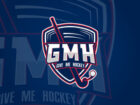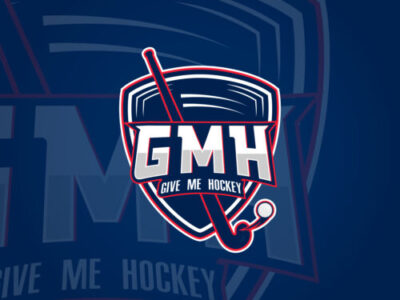When it comes to goalkeeping, India has had its own fair show of memorable greats, but right now, unfortunately, it seems that it is rather unsure over its identity underneath the crossbar, not knowing how to truly define its own style of goalkeeping. With no clear cut greats to inspire the next generation either, things look pretty bleak. And from an analytically critical viewpoint for those outside of the beautiful, vibrant country where hockey has a great history and is treated like a prince with a great following and sincere level of respect and passion for its beloved sport, India’s goalkeepers have seemingly lost the traits that once made them so wonderful.
India has always had a different style of goalkeeping to its international hockey neighbours, which is nothing to ridicule or sniff that, but of interest if they want to adapt it to the standards of the modern game. Whilst there considerable greats in India’s history of hockey, in their own time, the contemporarily available talent is not as high a standard as it arguably once was. Though, at this given time, since the retirement of Guus Vogels, there is no true world class goalkeeper on the international scene either right now. And though Adrian D’Souza looked like he was well on his way to being another great, after a failed drugs test and exile into the selection wilderness, there has not been a real king to the throne of India’s goalkeeping hall of heroes in the modern game.
On the continent, some hockey analysts see India as stuck in its past, yearning over the glory days from the history of dominance of the game when it was played on grass. The game has gone from grass to artificial sand based pitches to hybrid and water based pitches where the ball can swiftly be across the pitch in the matter of seconds, in the space of decades, and India doesn’t seem to have kept pace with these fast moving changes. In their eyes and the media’s, India is nowhere near as good as it once was, and too stuck in nostalgic reflection, to see so. And from their point of view India has tried all sorts of methodologies and experiments to try and bring the game up to date and back to the way things once were in their golden years. But for some strange reason nothing has gelled or clicked and India still struggle with enforcing basic standards that are a prerequisite for playing international hockey in the modern arena.
Coaching systems take years to instigate and establish and for this to happen, India needs to be patient and plan far ahead in order to reap the benefits, rather than expecting brilliance overnight, especially in goalkeeping where it is a specialist area that takes time and investment to produce world class quality. Talent is hard to discover and also to nurture because goalkeepers develop later than their outfield compatriots given the nature of the position and the requirements of pressure to perform under extreme stress. Life experience and the maturity and appropriate level of sports psychology and self confidence required to perform brilliantly week in week out also factors into the equation of providing consistency, the most important trait for goalkeepers, which when looking to push through the next generation, especially when young goalkeepers have not matured in that sense and therefore take longer to establish themselves in the elite tiers, is going to be a problem.
India’s arguably best ever goalkeeping talent was that of Shankar Lakshman, who managed to play in three Olympic games in 1956, 1954 and 1960, bringing home two gold medals and a silver medal and was the first goalkeeper to become a captain of an international hockey team. Not bad eh! And was captain of the Indian squad that won the 1966 Asian games, awarded the Arjuna Purskar award after the 1964 Tokyo Gold by the India government for his sporting achievements. That’s a once in a blue moon sort of goalie, not just a generation! That is essentially the equivalent of a hockey version of Peter Shilton who was 47 when he retired from the game and had a thirty one year career in which he played in a World Cup just off 41 years of age, or Dino Zoff who won the world cup at the age of 40 because no-one else was as good as him in the international set-up, even at that age, in the goalkeeping world of football: legends of the game that can never be matched again because of their sheer, raw talent. And considering they did not have the diet of our times to assist their fitness levels and the trappings of modern pro sport, which is why in truth they are so legendary, simply because of their natural abilities. Raw talent that was refined through self learning because there was no goalie coaches at that time! But where is the recycling of the wheel for India right now?
And the way the game has developed, and goalkeeping with it, means that India potentially sometimes lags behind its competitors on the international scene, because it is essentially already one or more steps behind, and is therefore hindering itself, like running a race with its hands tied behind its back, already disadvantaged because they are behind those setting the pace of achievement and success. India loves hockey like it loves cricket and yet where India is ranked best in the world in ICC ODI ranking, it is ranked eleventh for the men’s and twelfth for the women and have not challenged for medal positions for quite some time now. A lacklustre comparison struggling to keep up with its bigger brother almost is how the rest of the world often sees Indian hockey.
Understanding the history of goalkeeping and equipment offers an interesting insight into the way India structures its hockey programme and style of play and approach to tactics, in relation to global styles. At the dawn of new goalkeeping equipment in the 80s and 90s where England and Holland split in terms of making use of this new protection, with Holland sticking with the reactive approach and relying on a more pro-active approach based on reactions and active saves coming from reactive hands and legs from a patient upright positioning, England went the other way and started focusing more on playing percentages to cover more of the shot and intended space to block, more so. The extremes see Dutch keepers ditching arm protection in favour of relying on their gloves for attacking hand actions, which is a more pro-active way of dealing with high and low shots. And in Australia full body armour is often more seen as they play a percentage based system over covering as much of goal as possible, whilst England has been a bit of mix in between, focusing on the feet to do the work and kick away at all times, versus the use of the stick to in Holland.
At times India has struggled with having the security of world class goalie coaches to ensure there is a flock of world class goalies. England has a few goalie specific coaches around the national league system (which is important to make sure internationally selected goalkeepers keep their form of play maintained at club level), but nothing like the level in the Dutch system. But in Holland goalie coaches are more readily available, with Hoofdklasse level clubs and lower each having a goalie coach attached to do just that in terms of improving their first to third choice throughout the season. And on top of that, coaching sessions for young goalkeepers slightly more so, but most importantly, clubs provide kit for their goalkeepers. Allowing anyone to try the position, who could end up being the next Vogels (who knows until you see them play in goal!), ensuring they get the best pick of talent base. This reason in itself is perhaps a reason more youngsters want to play in goal (which you don’t see much of to be honest, but is a requirement for international standard goalkeepers, to start young!), to replicate their heroes in Jaap Stockmann or Pirmin Blaak, with kit that keeps them safe from harm and therefore happy to play in goal!
There are other slight differences in the technical game of goalkeeping that differ across the globe. Dutch goalkeepers prefer a weighted stick so that they can clear with the stick, if a rebound has popped up too far away to chase down but also needs clearing right away to prevent a rebound scoring chance, and also to help tip away the rebound via stick saves with a weighted shaft to block on the redirect. The Spanish style also favours the attributes of the Dutch, with the world’s best goalie coach Martin Drijver having had an input in developing their international talent.
And where England struggle is that coaches seem to be more interested in goalkeepers who look “flashy” in the sense that they try and get everything to look amazing when they are actually off angle or deeper in goal, trying to go for “highlight reel saves” on every shot, when actually, it was an incredibly simple save to make, but they wanted to over play the save to make themselves look better and therefore up to perhaps more interest to any scouts or coaches watching. Based on a perception that comes from coaches who do not understand the goalkeeping position and therefore think that if it looks good, it must be, but you should never judge a book by its cover! And in the world of goalkeeping, this is not the true case. Where Quico Cortes makes saves look simple by breaking down the fundamental basics of the save: angle, position, and attacking forward, body shape and so on, he is often under appreciated. And looking good is not always the case of a good goalkeeper because the great goalkeeper actually simplifies his saves so that he has less work to do, like Italy’s Buffon who has turned this into an art form.
Compare this, where the England goalkeeper is diving out off angle and puts the rebound back into play (at 0:35), making a hash of the save for a goal conceded, where stepping out to challenge and cutting the angle and staying up to push the rebound away with the glove, again making things simple would be better:
To this, where all the Indian goalkeepers are doing a great job of attacking the shot and challenging it too with a narrowed angle on pretty all the highlight saves!
Whilst things might have worked in days gone by, they still need renovating to be used properly in the reshaped modern game where rules are always changing and so are playing styles. The techniques of the past that work could be reapplied to a modern context and reshape the way goalkeepers can play, making use of their strengths. But gone are the days when goalkeepers need to log at every single short corner, where you had to be pretty crazy wearing no helmet and barely any protection when putting yourself prone to block and cover low, and now the goalkeeper has to be more prepared for drag flicks at any height or speed coming at them from skilful drag flickers who can disguise the incoming flick with their body shape and dummying approach which leaves it nigh impossible for the goalkeeper to stop, especially if they are wrongly trying to assume where it is headed.
Every country has a specific fundamental approach to things in terms of goalkeeping, and India offers its own “brand shall” we say, of goalkeeping, in its attacking style. If you take the example of short corners, where Indian goalkeepers tend to challenge much more than their global peers, in their own unique approach, stepping out much further out than their global contemporaries in order to really challenge the incoming strike or drag flick. This is a feature you also see at club level in the HIL and beyond with goalkeepers always aggressively stepping out to challenge shots, cutting the angles well and aiding themselves in the science of angles and goalkeeping to assist in taking away shooting space through narrowing the angle, as they instinctively react with great attacking depth.
Feel free to leave your feedback and opinions through the comments section or discuss on Twitter via @Grim_GK. To read more of my writing, especially goalie related analysis, you can check out my blog at http://grimsgoalkeeping.blogspot.co.uk/




